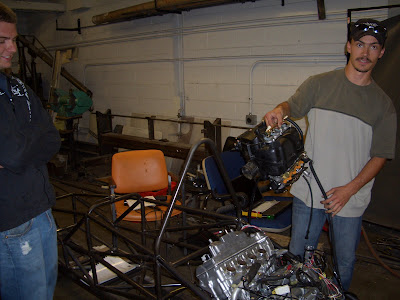The welder we had lined up for the fuel cell never got around to welding the tank so we picked it up and started practicing welding aluminum. We quickly found out that our archaic Miller welder was not up to par to create beautiful aluminum welds. But I can still show you the internal surge tank and low pressure pump.
Here is the inside of the mocked up fuel cell. You can see the low pressure fuel pump in the right side of the picture and the aluminum tube that directs the fuel into the surge tank. You can see the flange for the fuel pump in the bottom of the surge tank.

Also the front uprights have made some impressive progress. Here you can see them fully tacked together. They are lighter then the previous years aluminum uprights. This just goes to show that a little bit of thought can make fabricating out of steel a very good option.


























